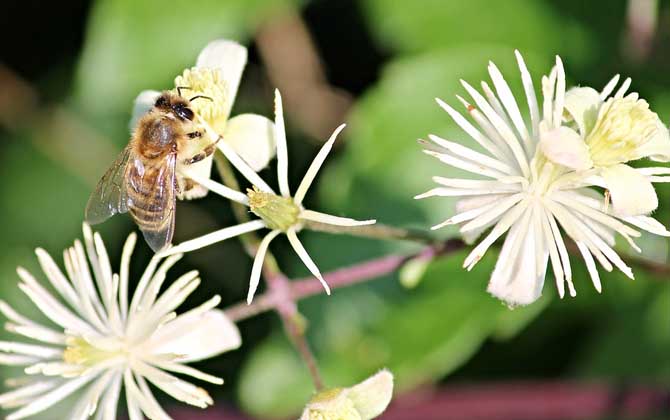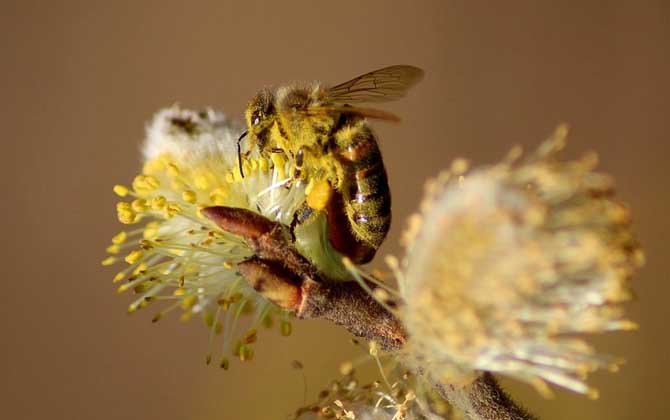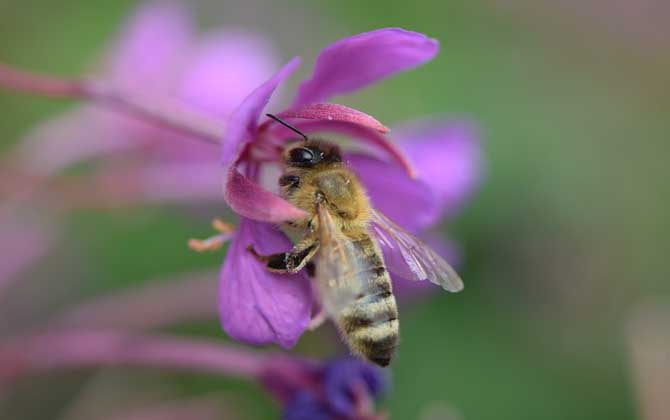Bee knowledge
How do I know if there is a wild honeycomb nearby?
The basic condition for beekeeping is that there must be at least a group of bees, otherwise there is no way to talk about bee farming, and the acquisition of bee colonies must either be purchased at an apiary or they must collect wild bee colonies, especially wild bee colonies The most common, let’s take a look at how to know if there are wild honeycombs nearby!
1, observe the honey collection
Observing the bee collecting behavior is an effective way to determine whether there are wild bee colonies nearby. If you see bees collecting flowers on the flower, it means that there must be bee colonies within a radius of 3 kilometers (the bee’s collection radius is about 3 kilometers). Then pay attention to the direction and flight height of the honeybees after collecting honey. The direction of the honeycomb is usually the direction of the honeycomb (the honeybees will fly straight back to the hive after collecting honey). The higher the honeycomb distance!

2, Observation of water extraction
Bees, like other animals, are inseparable from water. When the bee colony is short of water, they go to the water source to collect water. This situation is particularly common in the relatively dry summer and autumn seasons, and most of the bee colonies go out for water. After collecting water, they will fly straight back to the hive. Therefore, observing the bee’s water collection behavior is the most effective way to find honeycomb. If any bees are found, they must pay attention to the direction of the bee’s return to the nest. You can find the hive within 500 meters of the direction!
3, observe the stool
Bees live entirely on flowers (including pollen and nectar, etc.), and bees like other animals also excrete waste (bee excreta is related to food, mostly light yellow, yellow, dark yellow, etc.), so search for wild bees When swarming, pay attention to observe whether there are bee excrements nearby. In addition, the denser the excrement of bees, the closer the distance of the hive, especially when the sun shines on the hive, and the bees will excrete in large numbers. The specific location of the hive!
4, Listen to the sound
Bees make a “buzz” sound when they fly (the sound of a bee is not caused by wings, but from the sound of the tympanic membrane at the base of the wings of the wings), especially near the hive. Very dense, but many bees also emit a dense “buzz” when collecting honey from a honey source, so if there are no bees nearby to collect honey but the “buzz” is very dense, there must be honeycomb in the vicinity. The direction of the sound is easy to find!
Summary: The living habits of bees are the theoretical basis for searching for wild bee colonies. For example, the honeycomb can be limited to 3 kilometers according to the habit of collecting honey, the range can be reduced to about 500 meters according to the habit of collecting water, and the excretion behavior of bees can be Reduce the range of the hive to 50 meters!





